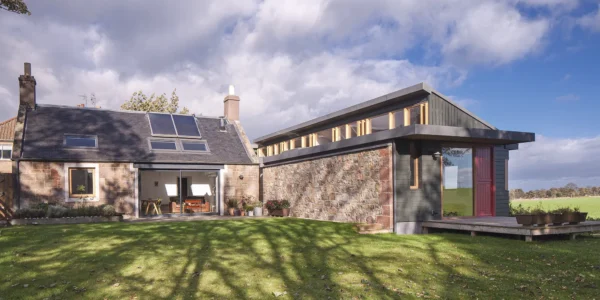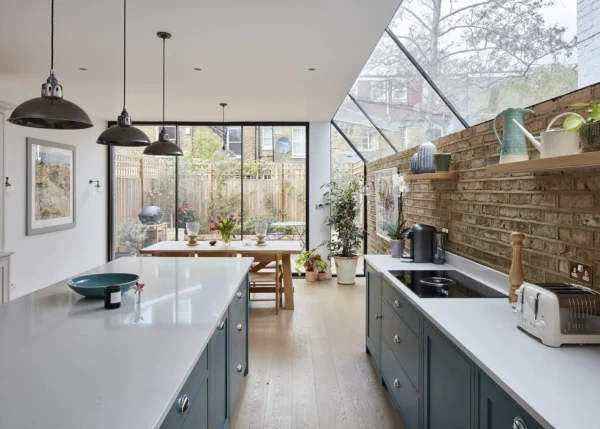Q&As
Build Insurance
I’ve been getting conflicting opinions regarding Warranty/cover VS architect completion sign off for self build. Whats the best thing to do if you intend to sell?
Answers
Whether you obtain a Warranty or Architects Certificate will come down to your lender, your conveyancer and the lenders of any future purchasers. With self-build’s, your lender will require proof of the provision of a Warranty in order for you to obtain funds and start the build; in terms of future purchasers, they will require a Warranty to be in place on the property in order for their lender to release funds for the purchase. For awareness, self-builds are usually considered as properties which you intend to live in for a period of at least 12 months after completion.
I’ve listed some key differences for you to consider between a Warranty and an Architects Certificate:
An Architect Certificate, or Professional Consultants Certificate (PCC), is provided by an party following supervision of the build. The Certificate is backed by the party’s Professional Indemnity Insurance. You and future purchasers should be aware that the Certificate is subject to the Architect (or PCC provider) trading at the time of a defect, damage or issue arising. The Certificate will also need to be transferable to future owners of the property. The Architects or Professionals liability for defects is subject to negligence being proved against them. This can be a costly and time consuming issue. Liability is generally limited to a 6 year period from completion.
A ‘Warranty’ can be referred to as many things, such as New Home Warranty, Latent Defects Insurance, Inherent Defects Insurance, Building Warranties and more, but they all have equivalent meaning. Warranties are first party insurance policies whereby the Insurer will indemnify the Policyholder (home owner) for defects in the design, workmanship or materials of the property which arise after practical completion (on the basis that the defect is covered by the Policy). Cover is provided for a period of 10 years from completion. In some cases, the Developer or Builder will be responsible for the rectification of defects during the first 2 years of the policy – in terms of self-builds where you intend to remain living in the property, the self-builder (as Policyholder) will not be liable to the Insurer.
With Warranty providers, you need to be aware that their products are accepted on their individual merits by each lender – there is no whole-scale approval for a Warranty provider. You can check which lender accepts a Warranty provider by looking at their entry in the Council of Mortgage Lenders Handbook, Part 2 (England & Wales), Section 6.7.1.
Please find enclosed links to relevant section of the CML Handbook where details for all lenders are provided:
Certificate: http://www.cml.org.uk/lenders-handbook/pcc/
6.7.1: http://www.cml.org.uk/lenders-handbook/englandandwales/question-list/1913/
6.7.4: http://www.cml.org.uk/lenders-handbook/englandandwales/question-list/1919/
6.7.6: http://www.cml.org.uk/lenders-handbook/englandandwales/question-list/1922/
Please note, where the lender is a Building Society and not listed by the Council of Mortgage Lenders, separate guidance is provided by the Building Societies Association.
Thomas Gilder
Director, Build-Zone & Self-Build Zone
It is best not to rely on an Architect’s Certificate as this will only provide cover in the event of you being able to establish negligence by the architect, which will be covered under their Professional Indemnity Insurance but only for a period of 6 years and it will not cover workmanship or defective materials.
Apart from the peace-of-mind you gain with a Structural Warranty, you are likely to find your Lender requires it as part of their lending criteria. Also, if your circumstances change and you need to sell the property in the next 10 years you will find that your buyer’s Lender will also need to see a Structural Warranty for the building before they release any money.
This product has the advantage over an architect’s certificate which is only an extension of the architect’s Professional Indemnity insurance, requiring you to prove negligence. Our policy is a ‘prime’ policy covering you for 10 years.
It is for that reason that warranties are more widely accepted by Lenders than Architects Certificates in the event a purchaser needs to obtain a mortgage when you come to sell the property.
Self-Build Zone offers some of the most comprehensive cover available in the market. This means that you are covered for a wider range of perils than are usually available to find elsewhere. We are also one of the cheapest. You should always find out what you are covered for before accepting a policy, as the cheapest policy is not always the best for your project.
Feel free to visit our website at www.selfbuildzone.com
If you plan to market the house within the first 10 years of its life and the purchaser needs to raise a mortgage to pay for it, the absence of 10 year structural warranty can be a problem. For most lenders it is a prerequisite. I’d therefore say that in this case, it’s essential. The big difference between a warranty and an architect’s certificate is that the former is insurance based. If there’s a defect that falls under the terms of the policy, someone will come and fix it. If you are covered solely by an architect’s certificate, then you have to sue them to get redress under their professional indemnity policy, which can be time-consuming and stressful.
Mike Hardwick (Build It expert & Self Build Consultant)




































































































